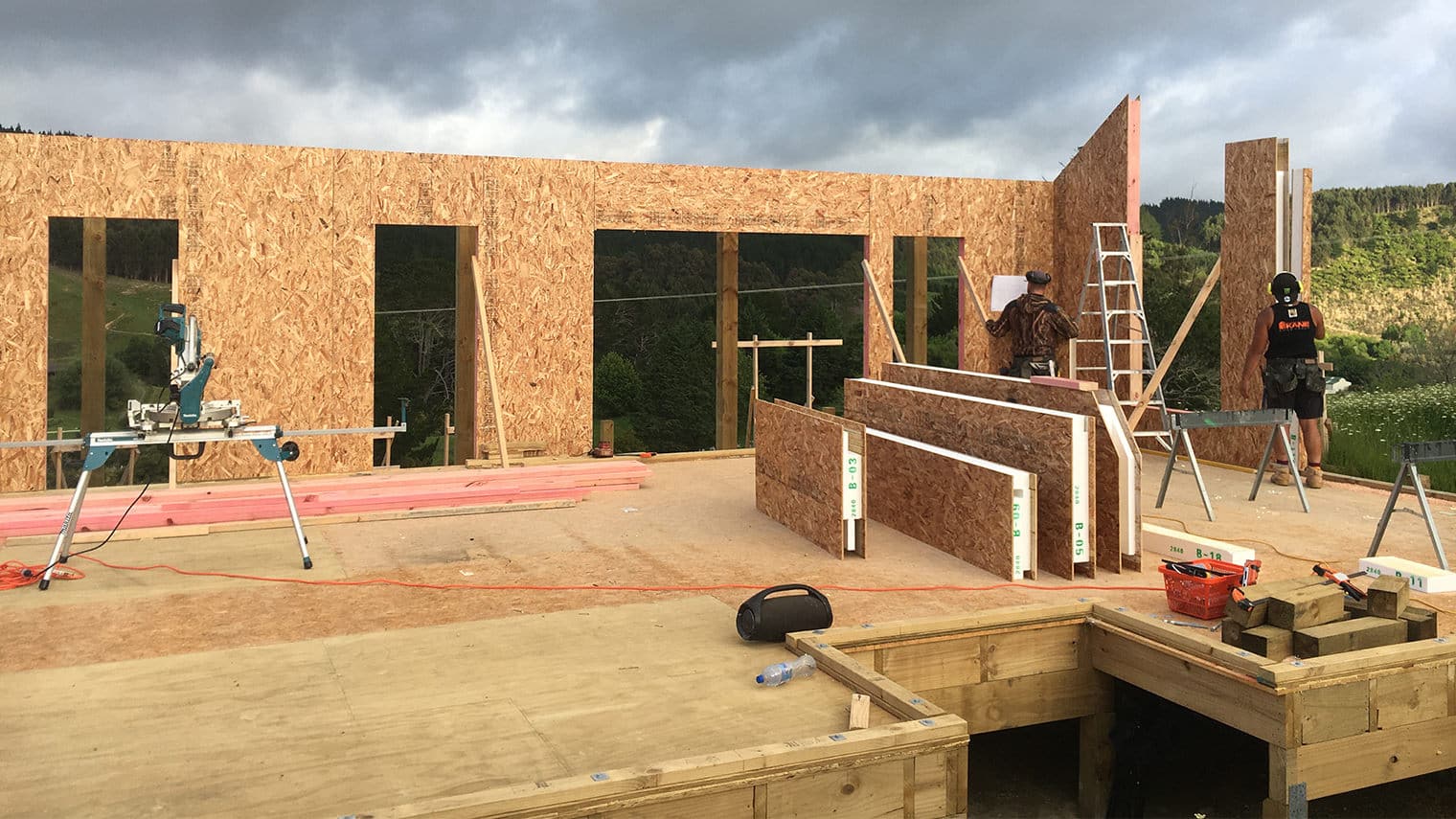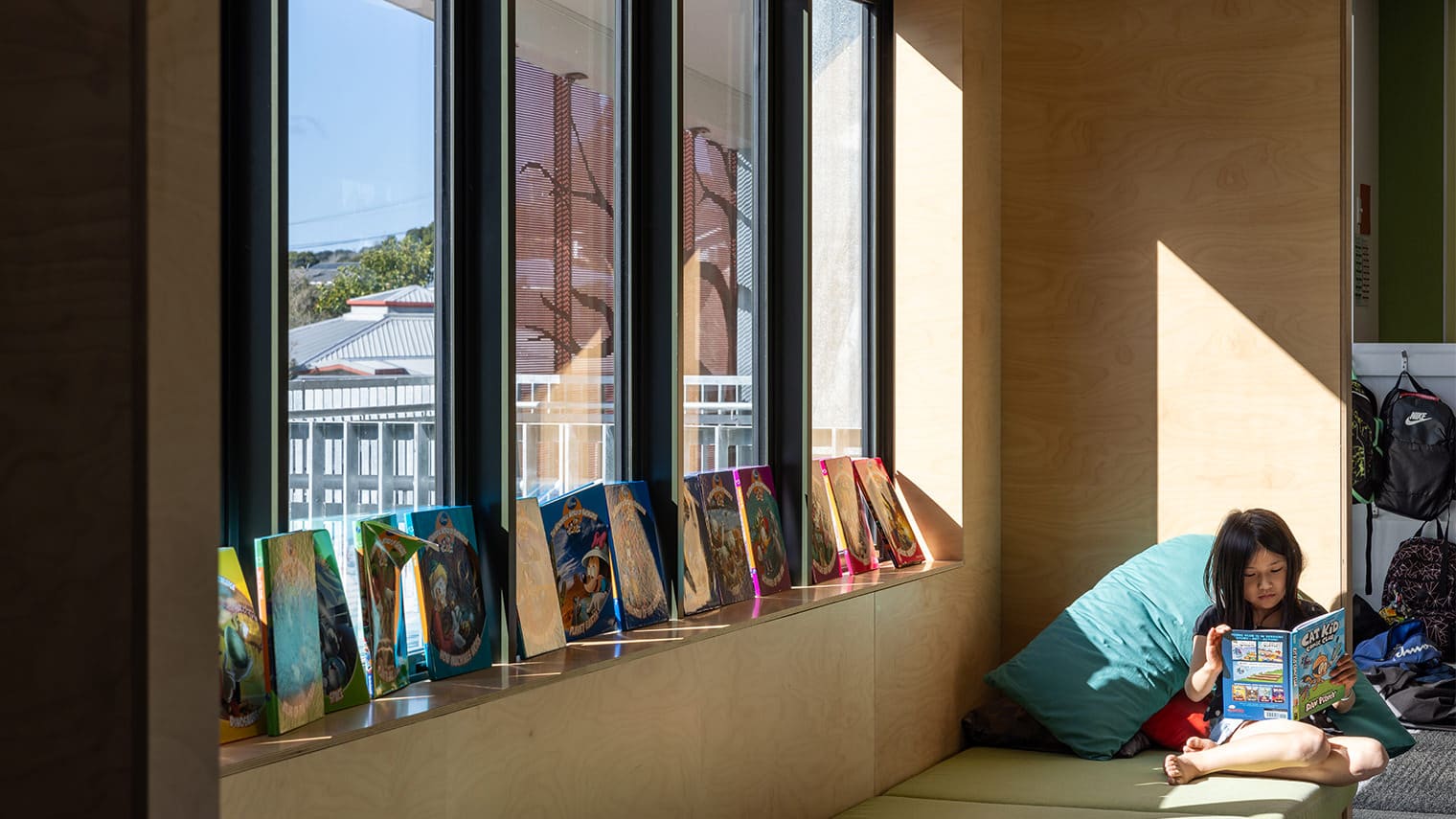A Move to Green

Buildings designed with Green Star ratings in mind are not only recognised as more sustainable, healthy and environmentally friendly, but tend to have a more considered design and construction process – resulting in a smoother build and a better result for both occupants and the planet. We talked to Respond Architects’ Fiona Duffy and Wendy Ryan, who recently completed the Green Star ‘Design & As Built’ course, about what this means for their clients.
Green Star is an independent system that uses star ratings to show how sustainable a building is. As Fiona explains, it covers all aspects of a building’s environmental performance.
“The goal of Green Star is to encourage a new approach to designing and constructing buildings by rewarding best practice and excellence in sustainability. It’s made up of four rating tools that each correlate to different phases of the built environment: ‘Communities’, ‘Interiors’, ‘Performance’ and ‘Design & As Built’ – which is the tool Wendy and I recently completed our training on. This one applies to the design and construction of new buildings and major refurbishments, and aims to help people achieve and rate their project’s sustainability goals.”

Now recognised as Green Star Accredited Professionals (GSAPs), Wendy and Fiona have the knowledge and skills to design projects targeting Green Star ratings, and to make high-quality submissions under the tool – something that can’t be done without the required accreditation.
“For our clients, this means we can design a Green Star building from start to finish and submit it for assessment. We can also assess remediations, alterations or additions to existing buildings. The Design & As Built rating tool assesses a building in nine categories: Management, Indoor Environment Quality (such as daylight and acoustics), Energy Use, Transport, Water, Materials, Innovation and Land Use & Ecology. Forcing yourself and the client to consider these things individually helps drive a much better overall sustainability result.”
As New Zealanders become increasingly aware of the benefits of a green building, Wendy says a positive Green Star rating is becoming a much more desirable attribute.
“Green Star is essentially an across-the-board measurement of how well a building performs. It’s an attractive proposition for a commercial tenant looking to rent a building, as they know it will perform well. It’s definitely become more of a selling point – especially for buyers intending to lease the building out. So, while designing and constructing a Green Star building can be an added expense up front, in the long term it will be much more efficient in terms of running costs and have greater buyer appeal.”

The Rating Process
When it comes to getting a new building Green Star assessed, there are different points in the design and build process at which you can submit your project for evaluation.
“When a client comes to us wanting a Green Star rated building,” Wendy says, “we develop the design and get this assessed. This can happen either at the very early stages of the design or at the very end, depending on whether we’re expecting any changes. We then get the As Built assessed once the project has received practical completion. Both the Design and As Built assessments are evaluated against the nine categories to achieve an overall rating. We try to aim for an additional 10 points during the design phase, as any small changes in the As Built could mean you fall short and end up reducing your rating by a star.”
Buildings assessed under the Design & As Built tool can be awarded between 4-6 stars. All nine of the criteria don’t have to be met, but points gained from each category count towards the overall rating. Using a contractor who is on board with the Green Star process can go a long way towards improving this end result.
“You don’t necessarily need to work with builders who are Green Star Practitioners,” explains Fiona, “but it’s definitely beneficial, as they understand the process and the importance of certain things. If a contractor decides to swap out suggested materials for example, or doesn’t fully comply with the waste management aspects of the system, it could mean the difference between a 6 and 5 star rating.
“At Respond we commit to working closely with any contractor to help them understand exactly what’s required of them. A complaint many builders have when working to Green Star standards is that there’s simply too much information to take in. We work hard to compile all of the required information in an easy to digest format, so we can partner with the contractor to achieve the best rating possible.”
One of the big drivers towards greener buildings came out of the signing of the Paris Agreement in 2015. Rightly hailed as a ‘truly historic moment in the fight against climate change’, it states that all new buildings must operate at net zero carbon from 2030, and 100% of buildings (including existing buildings) must do the same by 2050.
“The vision set by the Paris Agreement is a lofty one,” says Wendy, “but it’s certainly driven a huge shift in thinking around the design of new buildings and the retrofit of existing ones. It’s the way the world is moving, and I wouldn’t be surprised if there’s soon a directive from the Government encouraging people to build to Green Star standards. New Zealand is one of those countries who wants to do things well, and being environmentally friendly is in our nature. The built environment makes up 20% of New Zealand’s total carbon footprint, so if we can get this right we’ll be making a big difference.”
Fiona, who completed a similar qualification 10 years ago, believes the mood in New Zealand has changed a lot.
“A decade ago there simply wasn’t the same uptake. This time around it’s very different, and looking ahead to the next 10 years I believe there will be a lot more people moving in this direction. Kiwis are more aware of the climate impact of buildings and the performance of their homes, so as architects and designers it’s more important than ever that we don’t fall for ‘what’s the cheapest way I can do this’. That thinking might be good in the short term, but in the long term it’s not sustainable. Building to Green Star standards ensures a focus on quality and an outcome that delivers improved energy, environmental and wellbeing performance. It certainly pays off.”





